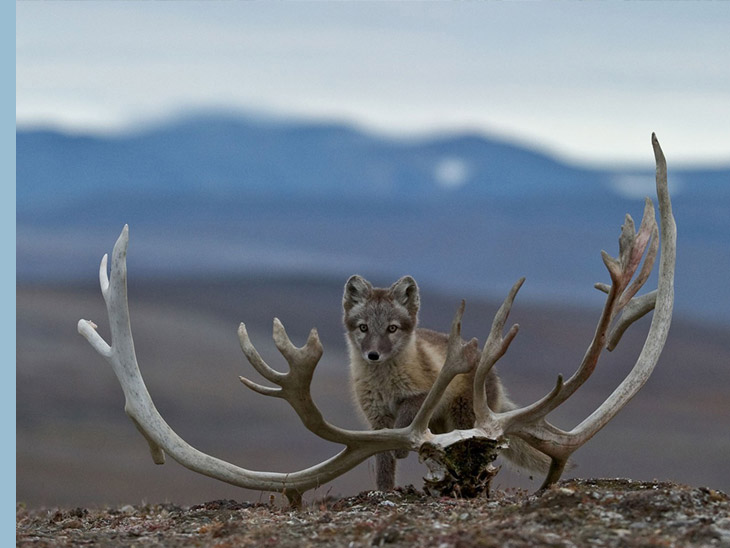LIFE AT THE EDGES OF THE WORLD
Russian wildlife photographer Sergey Gorshkov (1966) has been fascinated by nature since he was a child growing up in a remote Siberian village surrounded by the arctic wilderness. It took 40 years until he became a full-time wildlife photographer and now he is the founding member of the Russian Union of wildlife photographers. Especially fond of traveling to remote areas previously uncaptured, the insightful, raw nature of his imagery shows a sensitivity in working with untamed nature and its inhabitants. His main goal is to preserve the richness of nature through photography, his focus is on the wild world. Sergey Gorshkov has spent years photographing animals in remote places, such as Wrangel Island, which is located in the Arctic Sea. Among his many awards, Gorshkov has twice been voted Russia's Photographer of the year, and has been a finalist in seven Wildlife Photographer of the Year competitions. He has a particular passion for the Russian Arctic, and is in the process of documenting the entirety of this challenging landscape from east to west.
I guess only a few of you will know John Muir? John Muir — naturalist, author and early advocate for the preservation of wilderness — was the first visitor to describe Wrangel Island to the world in 1881. “This grand wilderness in its untouched freshness,” Muir called it, this “severely solitary” land in the “topmost, frost-killed end of creation.” That same year Muir published the world’s first description of Wrangel Island in a San Francisco newspaper series, later collected in a piquant travelogue called The Cruise of the Corwin. Why do I start this story with a reference to Muir? Well, simply because I have been using a quote from him for quite some time as a closing of my emails and as an opener on our website: “I only went out for a walk and finally concluded to stay out till sundown, for going out, I found , was really going in” and secondly, most of this story below has a link with Wrangel Island.
In October last year the winner of the annually Wildlife Photographer of the Year award was announced by none other than Her Royal Highness the Duchess of Cambridge, also known as Kate Middleton. The award, which is bestowed by Britain’s National History Museum, was last year given to the Russian photographer Sergey Gorshkov for his photo of a rare tree-hugging Siberian tiger in Russia’s Far East forests. The female Amur tiger was seen embracing a tree, rubbing herself against the bark to leave her scent and mark territory. Gorshkov’s photograph highlights an environmental issue: Amur tigers like the one in the photo have been hunted to near-extinction within the last hundred years, they are still very vulnerable to the threats associated with poaching and logging.
When Gorshkov set out to photograph a Siberian tiger in its native habitat using a remote camera trap, he knew that his chance of getting the shot was incredibly slim, he told the competition’s judges. Only a few hundred Siberian tigers are thought to remain, and they can have home ranges of 90 to up to 740 square miles. To determine where to set up his camera trap, Gorshkov scoured the Land of the Leopard National Park, in the Russian Far East, for signs of tigers, studying trees for scent markings, tiger hairs, urine, or scratch marks. When he thought that he’d found a good spot, he set his camera trap opposite a Manchurian fir tree, an old-growth species native to the region. It took him 11 months to capture this photograph.
"From the moment I first held a camera, my life took on new meaning. I've sold my business and gained the freedom of creativity: now it's just me, my camera and the creatures of the wilderness. I do what I love and shoot whatever I like. My personal project is capturing Russia's wildlife, and I'm endlessly grateful for Kamchatka and what it taught me about professionalism and nature. In the late 1990's, I visited Kamchatka for the first time. You know, Kamchatka leaves no one indifferent, and I wasn’t an exception. I thought about buying a photo album as mementoes, but couldn’t find one. Then I came across a thought: What a beautiful land, and there is not a single album. If I could, I would have come and photographed myself." — Sergey Gorshkov
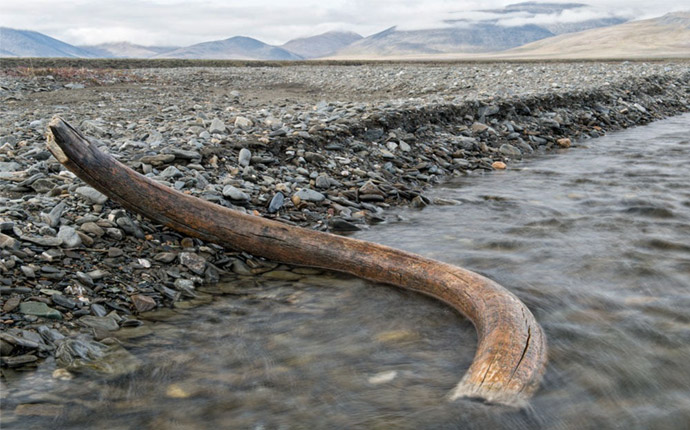
A tusk of a woolly mammoth lies on a stream on Wrangel Island. The furry mammoth died out about 10,000 years ago as glaciers melted and earth became warmer and hostile to the large beast. Shrinkage of its habitat and hunting by humans together caused the animal to disappear, but isolated populations survived in remote corners such as Wrangel Island, where the mammoth thrived as recently as 4,000 years ago. Possibly the last few hundred years of its existence, the animal coexisted with humans as carbon dating of various tools left behind by these prehistoric humans reveal. It is also possible that hunting drove the last of the surviving mammoths, on this frozen isle, to extinction. Today the island is littered with remains of the shaggy mammoth such as tusks and bone fragments.
WRANGEL ISLAND | a haven for wildlife, frozen in space and time
Wrangel Island has no permanent population, but 6 or 7 rangers reside here to carry out various tasks, such as ecological monitoring of the wildlife, maintenance of the field huts, and working with scientific groups, researchers, and tourist groups who visit the island.
Sergey Gorshkov's fascinating set of Arctic fox photographs comes from his long-term project on Wrangel Island. A remote island in the Arctic Sea, Wrangel Island has rarely been captured on film, which is part of what made it an attractive subject for the adventure-seeking photographer. “Just think: no one has managed to adequately capture the wild nature of Wrangel Island! The thought that I can become the first one to do this incredibly excites me, but I understood very well that the island would not open to me at the first meeting, and I did not set myself this goal.”.
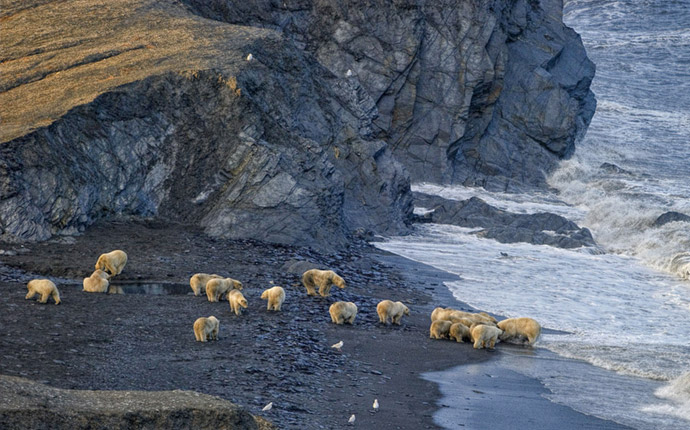
A polar bear group on a beach, crowding around a carcass. In the absence of sea ice for hunting seals, the bears resort to scavenging carcasses on land. Unlike Canada and the US, polar bears are protected in Russia. The Soviet Union banned all hunting in 1956, but after the fall of the Union, there has been not enough law resources and poaching is still a problem. In recent years, polar bears have started to approach coastal villages due to the shrinking of the sea ice, endangering the lives of humans and raising the chances of illegal hunting.
"When you go to Wrangel, you’re going back hundreds of thousands of years. It’s a place of ancient biodiversity, but it’s also very fragile." — Mikhail Stishov, a Moscow-based WWF scientist who lived 18 years on the island
The island is criss-crossed by reindeer, scavenged by wolverines, populated by huge populations of lemmings and patrolled by perky Arctic foxes. Thousands of Pacific walruses loll across its gravelly spits. Countless seabirds cling to the island’s rocky cliffs and nest along its riverbanks, including horned puffins, black guillemots, Pacific loons, and endangered peregrine falcons. It is home to the only breeding colony of snow geese in Asia and is one of the densest nesting areas for snowy owls. But the island is perhaps best known for its polar bears, especially the scores of female bears that den and give birth in the island’s snowy foothills each winter. Wrangel Island has been called a maternity home to polar bears. In addition to polar bears, large numbers are encountered polar owl, white geese and arctic foxes — to name just a few. For Gorshkov, Wrangel Island boasts an astonishing abundance of life, incredible levels of biodiversity and has a large concentration of many other animals, like musk oxen and the largest population of Pacific walruses.
ARCTIC FOX | almost extinct for its warmest fur, now threatened by climate change
It was in Kamchatka where Sergey Gorshkov started to shoot his first project about bears. Although bears are still his passion and his trademark, he moved to a remote island that harbored the world’s last woolly mammoths and is becoming a holdout for Arctic wildlife once again. Curved mammoth tusks can be found everywhere on the island, lying on the gravel beaches, in streambeds, even leaning against ranger cabins — trophies from another epoch.
Acclaimed wildlife photographer, Sergey Gorshkov, is currently working on a big project called Russian Arctic. He wants to capture the austere and beautiful world of the Arctic all the way from the eastern part to the western part of Russia. “To tell the greatest story about the nature found in the wild Arctic to those who cannot go there is the best gift I can give.” He wants people to find out what amazing animals live in this harsh land and how they survive there. This is not easy, because you will only see an image in front of you. Severe cold, knocking-down wind, dank fog and the sounds of bursting ice are all left behind the scenes. Therefore, Gorshkov returns many times to each location, often during different seasons and brings the necessary supplies for his stay. He doesn't know yet how long his project will take.
Sergey Gorshkov has spent his life observing Arctic foxes and capturing them on film. The Arctic fox is by far his favourite animal present in the Arctic tundra biome. For many years Gorshkov has been photographing them as part of the Russian Arctic photo project, with Wrangel Island being his preferred location for wildlife spotting. The clue is in the name. He truly believes that they can only be truly admired in the Arctic. Foxes are widely present in the Russian Arctic, which is where he's been seeing them, but they are sometimes hard to spot. Having said that, Gorshkov has spotted them on Franz Josef Land, on Taymyr, on the Yamal Peninsula and on Chukotka. But his opinion, the best place to watch the foxes stays Wrangel Island, a remote spot without any shops of land 300 miles north of the Arctic Circle in Russia’s extreme Far East.
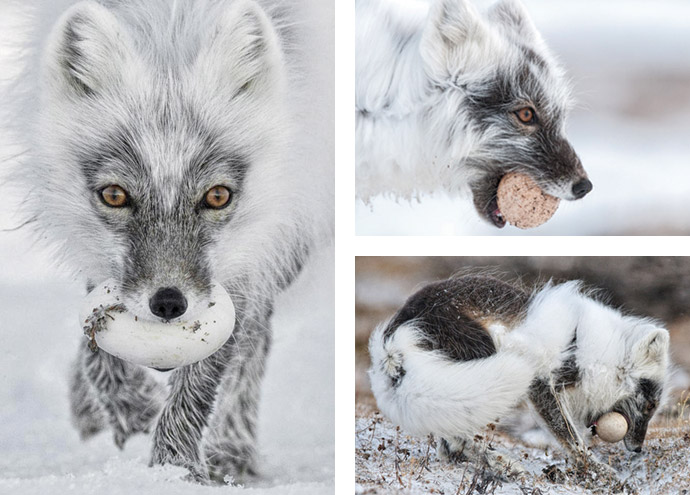
Left: 'Arctic treasure' by Sergey Gorshkov — Finalist, Animal Portraits, Wildlife Photographer of the Year 2017 | Right: Carrying its trophy from a raid on a snow goose nest, an Arctic fox heads for a suitable burial spot. This is June and bonanza time for the foxes of Wrangel Island in the Russian Far East. Lemmings are the basic diet for Arctic foxes, but Wrangel suffers long, harsh winters and is icebound for much of the year, making it a permanent source of stored food for these opportunist animals. The food convoys arrive at the end of May. Over just a few days, vast flocks of snow geese descend on the tundra of this remote UNESCO World Heritage Site, traveling from wintering grounds some 4,800 kilometers (3,000 miles) away in British Columbia and California. Not only is this the biggest breeding colony of snow geese in the world, and the only remaining one in Asia, but it is also growing: from 160,000 geese in 2011 to about 300,000 by 2016. The Arctic foxes catch any weak or sick birds, but what they feast on are the goose eggs, laid in early June in open nests on the tundra. Though the pairs of snow geese actively defend their nests, a fox may still manage to steal up to 40 eggs a day, harassing the geese until there’s a chance to nip in and grab an egg. Most of the eggs are then cached, buried in shallow holes in the frozen tundra, which acts as a refrigerator. These eggs will remain edible long after the brief Arctic summer is over and the geese have migrated south again. And when the new generation of young foxes begins to explore, they too will benefit from the hidden treasures.
To survive, these creatures need to hunt a lot. It’s very rare to come across a sleeping fox. The majority of Arctic foxes are mostly in motion. Gorshkov spent a whole year organising his two-month expedition to Russia’s rugged Wrangel Island where he pictured the intense expression of an Arctic fox as it gently carries a snow goose egg, a precious nutritious alternative of food for a nearby litter of pups. If you take a closer look at life in the Arctic, tiny lemmings and white geese are central to the survival of the Arctic fox. The absence of lemmings, in turn, strongly affects the colony of white geese. Any leftover goose egg treats are reserved for the future by being hidden in the frozen tundra waiting for the young cubs to grow up and begin to explore the territory.
His work photographing the Arctic fox, which gained him a finalist slot at the 2017 Wildlife Photographer of the Year contest, is a stunning look at the life and behavior of this rugged animal. Surviving, on average, for just three to four years in the wild, these well-adapted animals use their thick fur to brave extreme temperatures, its pure white coloration also acting as camouflage. An Arctic fox looks glorious in its winter coat, moving against the whiteness of the Arctic snow. They seem to have lots of fun playing in dry frosty snow as well. Therefore, Gorshkov believes that winter is by far the best and also the most rewarding time for encounters.
Gorshkov's personal goal, yet to be realised, is to witness a polar bear being followed by an Arctic fox — and to capture it on camera to show the world! During winter, when food becomes much more scarce, the foxes will often follow polar bears around and then scavenge what they can off of a kill once the bear is done.
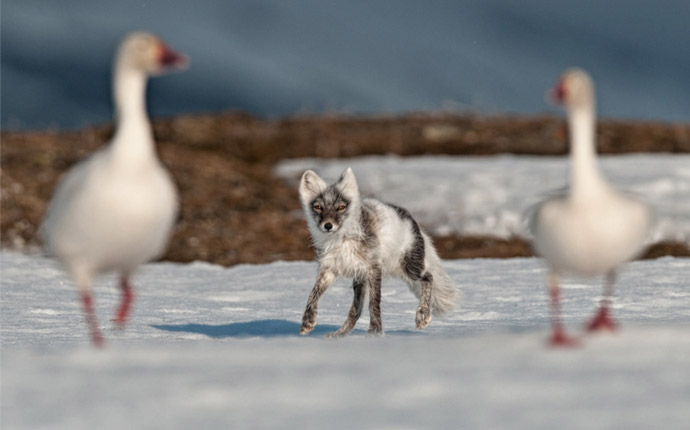
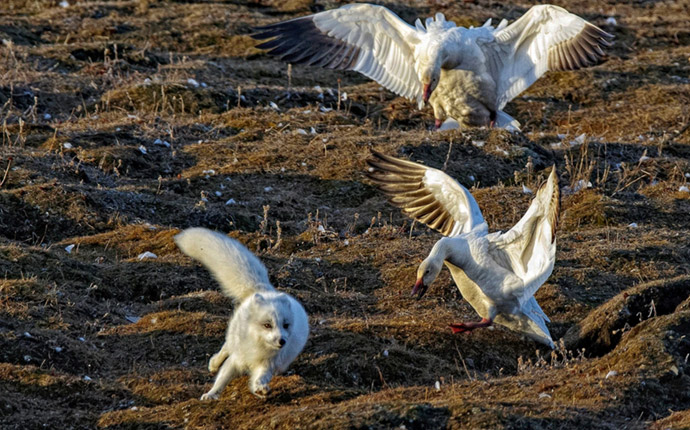
Above: Arctic fox navigates and tactfully hunts for eggs in a colony of snow geese. Not all the nests are as easy to pilfer. His perseverance will pay off. | Under: Snow geese flapping wings to defend their nests and the eggs inside them from hungry Arctic foxes. Quick as a flash, he makes off with no egg this time. Navigating through the colony is like running an obstacle course.
"Unlike many, I have the opportunity, or if I may say so, even the privilege of seeing what many simply are not destined to see, and what it is impossible to see, even for money. The ability to communicate with wild animals makes me happy. What I do is part science, part adventure, and part art." — Sergey Gorshkov
MUSK OX | a good indicator of the effect of rising temperatures and large swings in climate
What Gorshkov was rewarded with is the makings of an incredible series that includes a wide range of wildlife, not just the Arctic fox. His particularly charming set of images demonstrates the tenacity of the animals as they move in search for food made necessary by the long, harsh winter. Many more species of the cold wilderness share their uncertain future. “If polar bears are the face of climate change, musk oxen are the heart.”, revealed conservation biologist and respected ecologist Joel Berger (sometimes wearing a polar-bear costume made) in his book Extreme Conservation: Life at the Edges of the World. Herds of musk oxen traverses Wrangel Island. Musk oxen were extirpated from Alaska during the quarter of a century after the United States purchased the land from Russia in 1867. In the 1930s, efforts began to re-introduce the species to its former range: juveniles captured in Greenland were transported by ship, rail and boat by way of Norway to Nunivak Island in the Bering Sea. In 1975, descendants of the 20 animals that completed the trip were then reintroduced to Russia’s Wrangel Island; the United States offered these animals to the then-Soviet Union during the cold war as a token of friendship — a kind of panda diplomacy. Paleontology records show that the animals lived on the island during the late Pleistocene. This hairy, horned Arctic bovid, neither an ox nor a maker of musk, once roamed with woolly mammoths. Yet we still know very little about its physiology, reproduction, predation or food sources; least of all about its adaptive capacity.
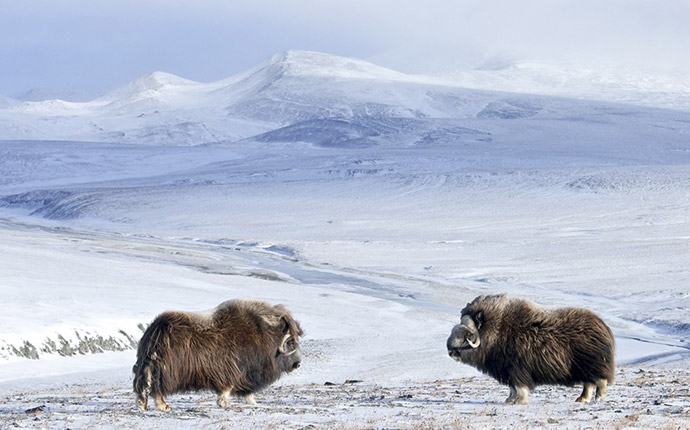
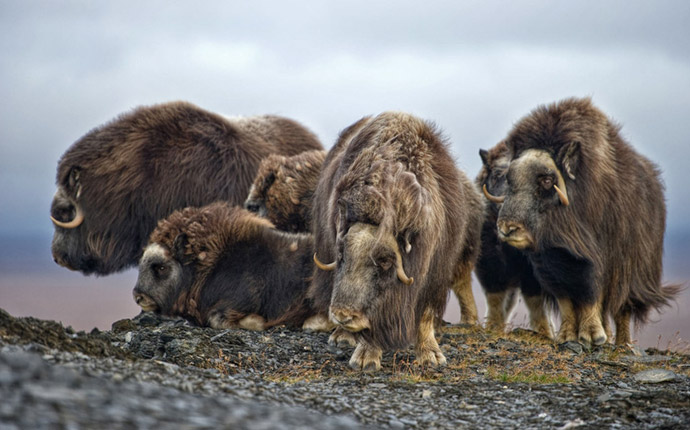
Above: Portrait of two hardy musk oxen, braving the island’s challenging winter conditions. | Under: A herd of musk oxen traverses Wrangel Island. A population of 20 musk oxen were reintroduced here from Canada in 1975. Paleontology records show that the animals lived on the island during the late Pleistocene.
Independent studies have shown, year on year, that global average surface temperature is rising and that warming patterns are most extreme in the polar regions. One of the most troubling recent observations in the Arctic is that the number of winter days when temperatures don’t drop below freezing is increasing. Precipitation falls as rain, melting snow on the ground; when the real cold returns, lichens and grasses are encased in steel-hard ice, impenetrable to hooves. This could lead to the deaths of many musk oxen. And other extreme events are becoming more common too. Freak weather and storms of great intensity are aspects of an alarming reality not confined to the Arctic. Worldwide, biodiversity loss is accelerating at an unprecedented rate. For Sergey Gorshkov, I think, it has become somehow a moral obligation to use his photographic projects fot insight to ecological well-being. Photography isn't conservation, but inspiring people to care, engaging people to listen and ultimately persuading decision makers to act, is.
These shaggy, horned Ice Age survivors are one of the many archetypal Arctic species that thrive on Wrangel Island, a little-known hotspot for polar biodiversity. Wildlife biologists came to Wrangel to understand how climate change and other factors, such as predation by polar bears, might be affecting the island’s roughly 900 musk oxen. The island’s isolation, along with its cold, dry polar climate, have created a unique and surprisingly biodiverse ecosystem. Despite the harsh conditions, more than 400 varieties of plants persist here — twice the number found on any other similarly sized piece of Arctic tundra — as well as hundreds of mosses and lichens. Some of them are not found anywhere else on Earth.
I hope I can make a trip one day to Dovrefjell Sunndalsfjella National Park in Norway, to find these magnificent musk oxen amid their natural habitat. I look forward to see them seriously testing their strength against each other with the air rang out with the loud bang of the head-on collision between two beasts.
"Like most good things in life, great photos of Arctic foxes come to those who wait. It’s hard to find an Arctic fox that wants to be found. Therefore, it is key to establish contact with them and cultivate trust. There is usually no time and no opportunity to take the exact same shot twice. Everything needs to be captured through the lens the first time around. My personal challenge was to find a photograph that would reflect the spirit of Wrangel Island. In retrospect, some shots turned out well purely by chance. Others demanded lots of preparation and planning, even multiple return trips to Wrangel Island." — Sergey Gorshkov
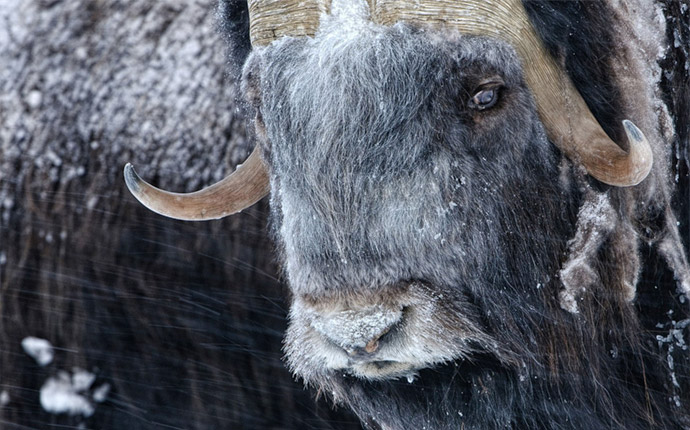
Portrait of a hardy musk ox, braving the island’s challenging winter conditions.
WRANGEL ISLAND | ecological conservation from 1976 to present
Wrangel Island’s early history is full of failed expeditions, shipwrecks, and strife giving way to modern day history full of political collisions. The discovery of Wrangel Island wasn’t easy. Lieutenant Ferdinand Petrovich tried to ‘discover’ the mythical island in 1821, 1822, and 1823 by making sledge journeys over the sea ice to the northwest, north and northeast from Kolyma River searching for the unknown land. On his last expedition he was only 15 miles away from the coast but he didn’t see the island. In 1867, American whaling ship master Captain Thomas Long was the first European who undisputedly sighted and landed Wrangel island. He described its southern shores, deeming it was a bigger landmass. Long named it Wrangel Land after Russian Navy seaman Ferdinand Wrangel (1797 - 1870). In 1911, the Russian ice breakers, Taimyr and Vaygach, conducted a land and ocean survey including Wrangel Island. They also claim island for Russia at that time. In january 1914 the famed and fraught voyage of the Karluk occurred. The flagship of the Canadian Arctic Expedition, a brigantine formerly used as a whaler, was crushed and sunk. In the ensuing months, the crew and expedition staff struggled to survive, first on the ice and later on the shores of Wrangel Island. In all, eleven men died before rescue. In September 1921, Vilhjamur Stefansson initiated an attempt of illegal colonization of Wrangel Island for Britain. Four young men and one woman, Ada Blackjack, ventured deep into the Arctic in a covert attempt to colonize the deserted island. Two years later, Ada Blackjack, a diminutive 25-year-old Inuit seamstress, emerged as the sole survivor of this ambitious polar expedition. This young, uneducated woman conquered the seemingly invincible north and survived all alone after her male companions perished. Rusian icebreakers made several attempts to reach the island, but were unable to come to shore because of thick sea ice.
The region around Wrangel is not known to have substantial oil reserves, and even if it did, its nearly year-round ice would likely make extraction prohibitively difficult and expensive. For nine months only three colors — white, black, gray. Today, Wrangel Island is one the least visited and most restricted nature reserves in the world — a place that requires several government permits to visit and can be reached only by helicopter during winter or by a Russian icebreaker during summer. When Sergey Gorshkov arrived on the Arctic coast of Russia, the first thing he saw — the endless mountains of debris and loose rusty barrels piled everywhere — were above all a giant dump. However, not only military — any attempt at industrialization polar territories accompanied by horrific pollution. The harsh landscape supports a surprisingly diverse ecosystem. Wrangel Island was declared a zapovednik — a federally managed nature sanctuary — in 1976, and it remains one of Russia’s coldest, remotest pieces of protected wilderness.
Every year tons of fuel were imported on the island , which sheds a significant amount of land and coastal waters, heavy equipment, tons of work equipment, home and food supply of the inhabitants of the village with a population of only several dozen people. Nothing, except for personal property departing the mainland from the island were not taken out — all the waste, household garbage and dilapidated equipment left on the landfill on the island. Wrangel Island is no exception, but merely an example of the development of North.
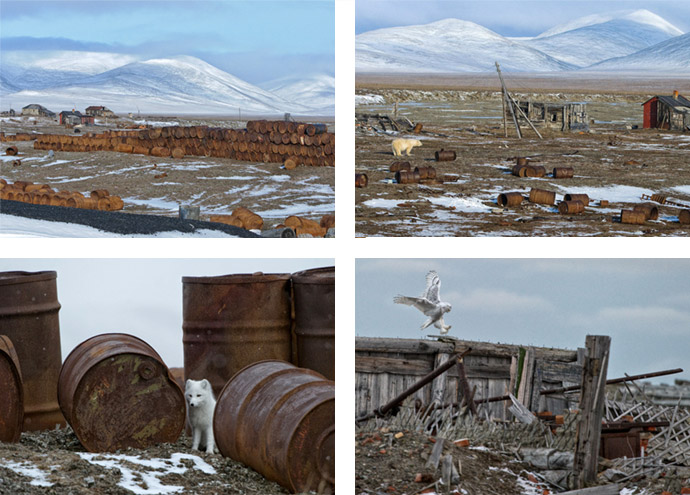
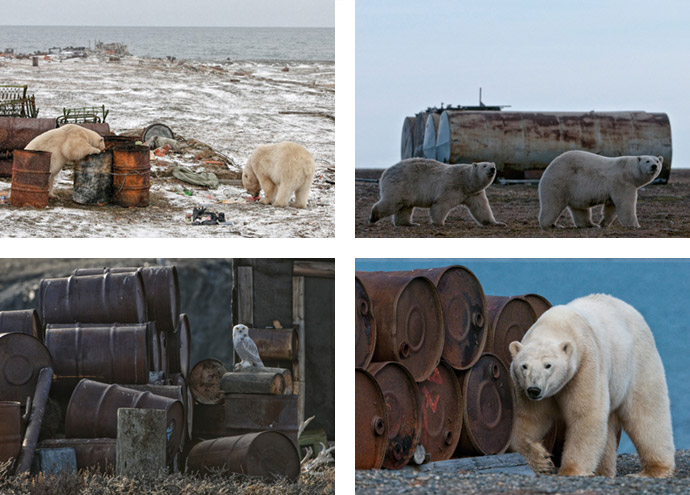
When you arrive at the Arctic Coast of Russia the first thing you can see is tons of garbage and rusty barrels. Any attempts of industrialization of the Arctic territories have always been accompanied by its terrible pollution. These substances leak from the rusty barrels and pollute soil.
"Our fathers had been poisoned Arctic. In our best to leave it to our children a little bit cleaner." — Sergey Gorshkov
Conservation of nature on the island has being neglected due to the lack of population and geographic isolation. Sometimes empty barrels were taken out of the island by empty ships on their way home. But that was unprofitable because barrels should have been pressed on the shore before being loaded on the ship. The problem is that there are no presses on the island. The scrap on Wrangel Island is concentrated on the south coast, the very place that previously housed several organizations: the airport, the base defense, the meteorological station and a tiny ghost town from the Soviet era, Ushakovskoye. Nowadays most of the barrels became worthless but there are still dozens tonnes of gasoline, oil and diesel fuel inside them. These substances leak from the rusty barrels and pollute soil, leading to contamination of this protected area. Some of the barrels were stored, others thrown into the sea or on the river banks. The gradual decay of the barrels' seals and the severe blizzard storms lead to the washing of barrels into the sea, their future will be thrown in different parts of the island on the coast.
But rusty barrels do seem very harmless in comparison with hundreds of radioactive batteries used for powering navigational aids in the Soviet time. Radioisotope Thermoelectric Generators (RITEGs) — electrical generators with nuclear fuel — were used during that time to power navigation equipment such as lighthouses. The fuel they used was strontium-90, a deadly isotope, a dangerous substance that lasts for about a thousand years. On Wrangel Island, a radioactive comparable power source was washed away by the sea in Rogers Bay. Deleting the resources by itself is not possible and also extremely dangerous. Finding and removing RITEGs requires many dive operations and helicopter rentals. In the event that the RITEG housing breaks, radioactive contamination of the marine protected area may occur.
In 2004, the Wrangel Island gained a status of the area of World Natural Inheritance but with one condition: to clean the territory from engineering metal, garbage and debris. It was allowed to keep only a small part of the historic site if the protected area was not further polluted, thus becoming a monument to the Arctic. Armed forces reserve personnel began clearing and disposing of empty barrels to the storage site. Some of the barrels were exported to the mainland by helicopter flights, but that's just a drop in the ocean. There was not enough money. Reserve personnel were on hand to develop the technology to press and store scrap metal for further export, but there is simply no press. There was only a small tractor, an achievement in itself. The workers of this nature reserve tried to clean it by themselves but their efforts weren't enough. But the most ridiculous thing is that the Wrangel Island wasn't included into the Russian government's clean-up program for the Protection of the Arctic Marine Environment.
"The most important quality is a sincere desire to photograph. The second is patience. Do not run after animals, you need to choose a beautiful place and wait patiently. Moreover, you shouldn’t pursue luck from the very beginning." — Sergey Gorshkov
WOLVERINE | a ferocious reputation as a top predator in the wild
Kamchatka has been called one of the last untouched places on earth. Without any doubts the king of Kamchatka fauna is the brown bear, Sergey Gorshkov's favorite, but he also met some wolverines. Winter is prime time to search for the elusive animal. And bears, always a danger, are hibernating. There's nothing much said about his series but I don't want to keep them from you because it's such a powerful and intriguing scavenger after all.
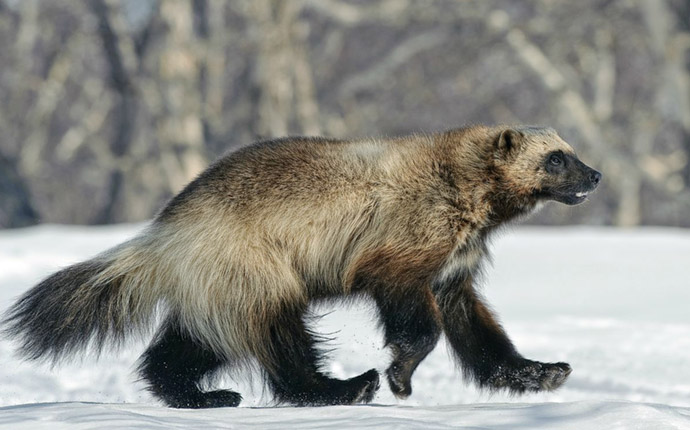
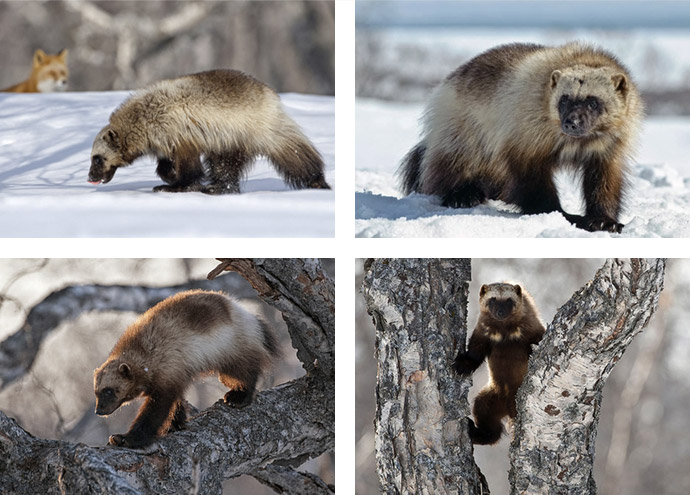
Wolverine roams the Arctic tundra covered with animal tracks with red fox in the background and climbing birch tree.
Right now Sergey Gorshkov is a resident in the National Geographic magazine and has authored 7 photo books. His report in the National Geographic magazine and social networks spurred members of the Russian leadership to include the Wrangel Island in the cleanup list of the Russian Arctic and now garbage there is being collected.
Gorshkov, a former hunter, now speaks on behalf of shooting with camera and against trophy hunting. He has also participated in the BBC projects Frozen Planet and Planets Earth 2. A particular photo of Gorshkov, 'Arctic Fox with an egg', was chosen as the face of the WPY contest in 2017 and entered the top 50 of the Greatest Wildlife Photographs of 2018 by National Geographic. Another photo of the eruption of Tolbachik volcano was said to be one of the top 100 wildlife photos of the last 50 years according to the BBC Wildlife Photographer of the year contest.
Thank you Mr. Gorshkov for all these beautiful images that show us the importance of the fight against global warming so that the lives of the majestic animals can last.
Stay amazed!
"I rejoice at snapping an excellent shot with camera more than I ever did firing a clean shot with a gun. In the coarse of time I have understood what is the greatest advantage of hunting with camera: the instinct to hunt is satisfied without needing to kill. Today my weapon is the camera, and I will not point it against nature, but to defend it." — Sergey Gorshkov
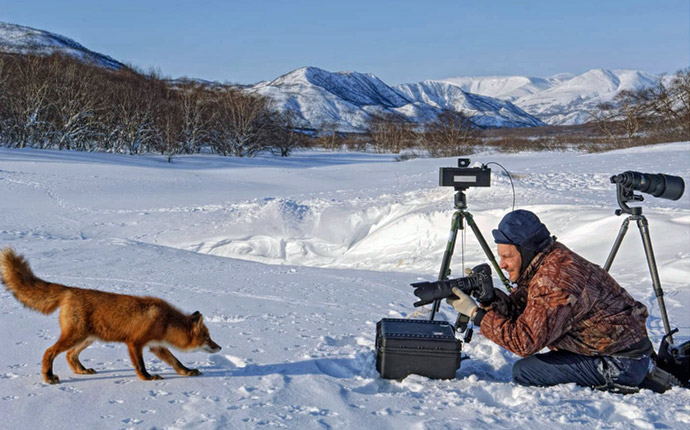
All images courtesy of the artist. Photos © Sergey Gorshkov.
See/read also some story related movies/interviews:
Related stories on Woodland:
